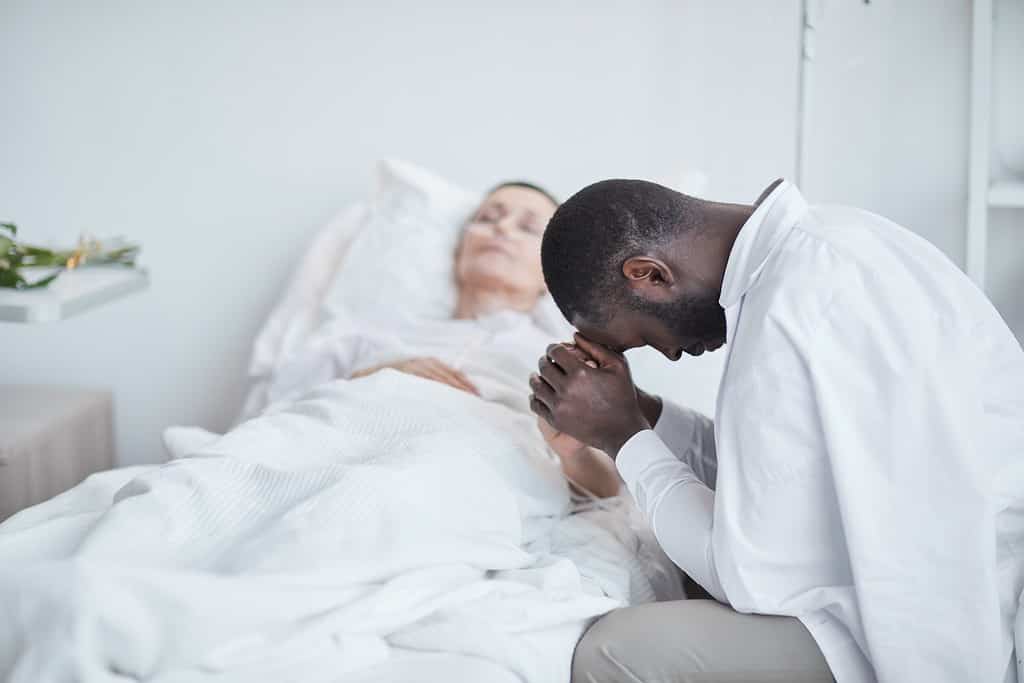In the U.S., more than 31% of people pass away at home. While that percentage has increased in recent years for a variety of reasons, many Americans still pass away in the hospital.
At one time the hospital is where the definite majority of Americans died. To be more specific, it was around 60% of deaths not that long ago. The latest data from the Centers for Disease Control (CDC) shows that the percentage of people dying in a hospital has dropped to 35.1% while deaths at long-term care facilities rose from 22.9% to 26.8%.
The shifts provide insight into how cultural and societal beliefs about death and dying are changing. But even if someone plans to die at home or is currently in a long-term care facility, they may end up dying in a hospital. For that reason, it’s important for everyone to understand what happens after a loved one passes away in a hospital.
Pronouncing the Death
The first thing that will happen when someone dies at the hospital is pronouncing the death. A death pronouncement may seem like a minor technicality, but it’s actually really important. So important, there is protocol that hospital staff must follow when pronouncing a death. They must:
- Verify the identity of the person with their hospital ID tag.
- Physically examine the person and use physical stimuli to verify there’s no response.
- Listen and feel for a heartbeat.
- Look and listen for signs of breathing for at least one minute.
- Check the pupils for responses to light and other stimuli.
- Record the time of death.
Once the death has been formally pronounced and documented the next phase of the process begins.
Viewing the Body
You don’t have to but it is possible in many cases to view the body of a deceased loved one in the hospital. Usually this is restricted to direct family members like spouses, parents and children. Viewing the body will probably only be allowed shortly after the death before the body is moved.
Keep in mind if your loved one passed away in a surgical room or had a communicable disease you may not be able to view the body or may have to wait a period.
Body is Cleaned and Prepped for Moving
Before the body is moved, hospital staff will make preparations. They will clean the body and remove any medical devices. Staff will also ensure that the body is properly covered and clothed so that it isn’t exposed.
Moving the Body to the Morgue
Often after a person passes away, their body is moved to the hospital’s morgue. It’s basically a temporary holding facility where the bodies are kept at a cold temperature to delay decomposition. Unlike what is shown in film and television, autopsies and related procedures aren’t usually performed at the hospital’s morgue.
How long the body will remain in the morgue varies, but it’s typically a day or less. If the family didn’t get a chance to view the body previously, they may be able to do so while the body is in the morgue.
Transport to the Medical Examiner’s Office or Funeral Home
What happens next will depend on whether or not the medical examiner needs to determine a cause of death. If so, the hospital will release the body to the local medical examiner’s office. Staff and the family will need to correspond with the medical examiner’s office to arrange transport, which should take place that same day.
If no autopsy or physical examination is needed, the family will need to make arrangements for transporting the body. The easiest and most practical option is to contact the funeral home that is going to provide disposition services. The funeral director can work one-on-one with hospital staff to arrange the transport, including the proper paperwork for releasing the body to the funeral home.
Should an autopsy be needed you’ll still need to arrange transport from the medical examiner’s facility once their work is complete. At that point you can get your chosen funeral home to make the transportation arrangements or you can handle it on your own using other means.
Communicating With Hospital Staff
Unfortunately, hospital staff members deal with death on a daily basis. They are sensitive to the fact that the loved ones of the deceased are feeling a lot of emotions mixed with confusion and uncertainty about what happens next. There should be a caseworker or member of the hospital staff that is there to answer your questions and provide information.
Because every situation is different, it’s important to openly communicate with hospital staff. Ask specifically what will happen next so that you know how to prepare. They should let you know if they are recommending that the medical examiner’s office perform further analysis soon after the death so that you are prepared for any potential delays. You should also be provided with information about how to contact the medical examiner’s office and who to talk to for arranging transport.
Your funeral home should also be able to provide answers if you are unable to reach hospital staff. And if you prefer, the funeral home can take the reins so that you don’t have to deal with third parties at all.
Cremation.Green can coordinate with the hospital or medical examiner’s office to arrange for transport of a loved one to our facility. We handle all of the specifics so that the family can turn their attention toward coping with the loss and preparing for the next steps.
We’re available to talk on the phone, answer texts and reply to emails 24 hours a day.






